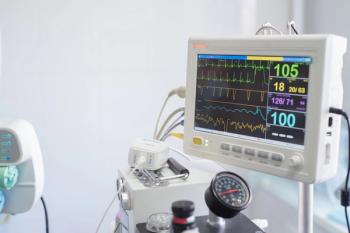
Fetal telecardiology for medically underserved women
Results from a recently published study in Obstetrics & Gynecology suggest that fetal telecardiology may be a viable solution for mothers who live in remote areas.
Prenatal diagnosis of congenital heart disease can improve outcomes but getting a diagnosis can be difficult for mothers who live in remote areas. Results from a recently published
Methods
The authors conducted a prospective case series of pregnant women at 18 to 38 weeks’ gestation who had risk factors for fetal congenital heart disease. The case series was performed from November 2015 to December 2018. Mothers were referred by local obstetric care providers for telecardiology, which was performed during a weekly local-site clinic by obstetric ultrasonographers in real time. The results were given to the mother by a fetal cardiologist at a children’s hospital approximately 240 miles away and across two mountain passes. Pregnancy outcomes were reported as voluntary interruption of pregnancy, intrauterine fetal death, live birth, or postnatal death with either intent to treat or comfort care.
In case you missed it -
The authors evaluated the fetal telecardiology program based on five domains: 1) education of obstetric ultrasonographers; 2) process and efficiency; 3) patient satisfaction; 4) out-of-pocket expenses and time for travel to the parents; and 5) accuracy of cardiac diagnosis and success of risk stratification of pregnancies with fetal congenital heart disease.
Results
Over the initial training period of 3 months, the obstetric ultrasonographers improved their identification of fetal congenital heart diseases. After this period, of the tele-echocardiograms that the ultrasonographers identified as “abnormal,” 97% were diagnosed with structural, functional or rhythm disorders. Over the study period, telecardiology was performed once a week and also for suspected fetal congenital heart disease or arrhythmia outside clinic hours, resulting in a total of 455 examinations in 368 pregnant women.
Have you read:
All mothers who had examinations performed reported higher satisfaction with having the fetal cardiac evaluations performed locally as opposed to traveling to the distant center and would rather be seen again at a telecardiology visit than travel to the distant site. Furthermore, based on questionnaires randomly given to 127 mothers to assess cost savings, $57,212 was saved in overnight stay costs. If travel costs were added, the overall cost per visit by staying at the local site was nine times less than traveling to the distant site for the same care ($61 vs $581).
No mothers needed to return for a second telecardiology appointment because of nondiagnostic echocardiographic image quality. Twenty-eight fetuses (8%) had congenital heart disease, and 15 (4%) had arrhythmia. Total mortality among the 28 fetuses was 31%. All fetuses with congenital heart disease were correctly risk-stratified for delivery and no neonates were delivered locally and then required transfer to the distant site.
Conclusion
The authors believe that their findings illustrate the value that fetal telecardiology could have for pregnant women who live in a medically underserved area. However, further studies are necessary to assess the replicability of these results.
Newsletter
Get the latest clinical updates, case studies, and expert commentary in obstetric and gynecologic care. Sign up now to stay informed.
















